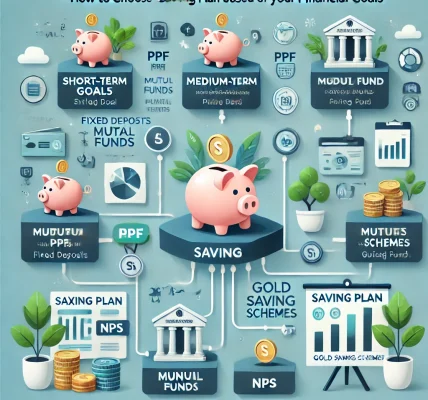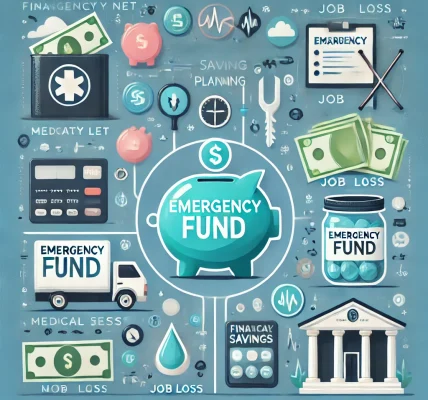Introduction
Life is unpredictable, and financial emergencies can arise at any time. Whether it’s a medical emergency, job loss, car repair, or unexpected expenses, having an emergency fund can be a lifesaver. An emergency fund acts as a financial cushion that helps you stay afloat during difficult times without relying on loans or credit cards.
In this comprehensive guide, we will explore the best strategies to build an emergency fund, ensuring your financial security and peace of mind.
What is an Emergency Fund?
An emergency fund is a dedicated pool of money set aside to cover unforeseen expenses. Unlike investments or retirement savings, an emergency fund is meant for immediate accessibility and financial protection in times of crisis.
Why is an Emergency Fund Important?
- Financial Stability: Prevents you from falling into debt during unexpected expenses.
- Reduces Stress: Knowing you have a financial backup gives you peace of mind.
- Avoids High-Interest Debt: Helps you avoid reliance on credit cards or loans with high interest rates.
- Prepares for Uncertainty: Ensures you are financially prepared for job loss, medical emergencies, or urgent home repairs.
Step 1: Determine Your Emergency Fund Goal
The amount needed in an emergency fund varies from person to person. Consider the following factors:
How Much Should You Save?
- Basic Rule: Financial experts suggest saving 3 to 6 months’ worth of living expenses.
- Single vs. Family: If you are single with a stable job, three months’ worth of expenses may be enough. If you have a family or an unstable income, aim for six months or more.
- Risk Factors: Consider job stability, medical conditions, and potential major expenses in your life.
Step 2: Choose the Right Place to Keep Your Emergency Fund
Since emergency funds should be easily accessible, consider these safe and liquid options:
- High-Interest Savings Account: Provides easy access while earning interest on your savings.
- Money Market Account: Offers better interest rates than a regular savings account while maintaining liquidity.
- Fixed Deposits (FDs) with Partial Withdrawal Options: Suitable for those who want disciplined saving but also need access to funds in emergencies.
- Cash Reserve: Keeping a small amount of cash at home for immediate access.
Step 3: Set a Realistic Savings Plan
Once you have determined your savings goal, create a plan to achieve it.
Strategies to Build Your Emergency Fund:
- Automate Savings: Set up an automatic transfer to a separate savings account every month.
- Start Small: Begin with a small amount (e.g., $50-$100 per month) and increase it as your income grows.
- Cut Unnecessary Expenses: Identify non-essential spending and redirect that money to your emergency fund.
- Save Windfalls: Any bonuses, tax refunds, or unexpected income should go directly into your emergency fund.
- Use a Budgeting App: Apps like Mint, YNAB, or PocketGuard can help track savings progress.
- Reduce Debt: Prioritize clearing high-interest debt while also setting aside money for emergencies.
Step 4: Maintain and Grow Your Emergency Fund
Once you’ve built your emergency fund, it’s essential to maintain and grow it.
Tips to Sustain Your Fund:
- Replenish After Use: If you withdraw from your emergency fund, prioritize refilling it.
- Adjust for Inflation: Over time, increase your savings to keep up with inflation and lifestyle changes.
- Avoid Temptation: Use your emergency fund strictly for genuine emergencies, not vacations or non-urgent expenses.
- Regular Reviews: Review your fund annually to ensure it aligns with your current financial situation.
Step 5: When to Use Your Emergency Fund
Knowing when to use your emergency fund is crucial to ensure it serves its true purpose.
Appropriate Uses of an Emergency Fund:
- Medical emergencies not covered by insurance
- Job loss or sudden income reduction
- Major home or car repairs
- Unexpected essential expenses (e.g., urgent travel due to family emergency)
When NOT to Use Your Emergency Fund:
- Buying luxury items or vacations
- Paying off low-interest debts
- Investing in stocks or business ventures
- Non-essential upgrades (e.g., new phone, entertainment expenses)
Conclusion
An emergency fund is an essential financial tool that provides security and stability in uncertain times. By setting clear savings goals, choosing the right account, and maintaining disciplined saving habits, you can build a solid financial safety net. Start today and secure your future against unexpected financial setbacks!
Final Tip:
Consistency is key. Even small contributions can grow into a significant safety net over time. Don’t wait for a crisis to start saving—begin building your emergency fund today!




